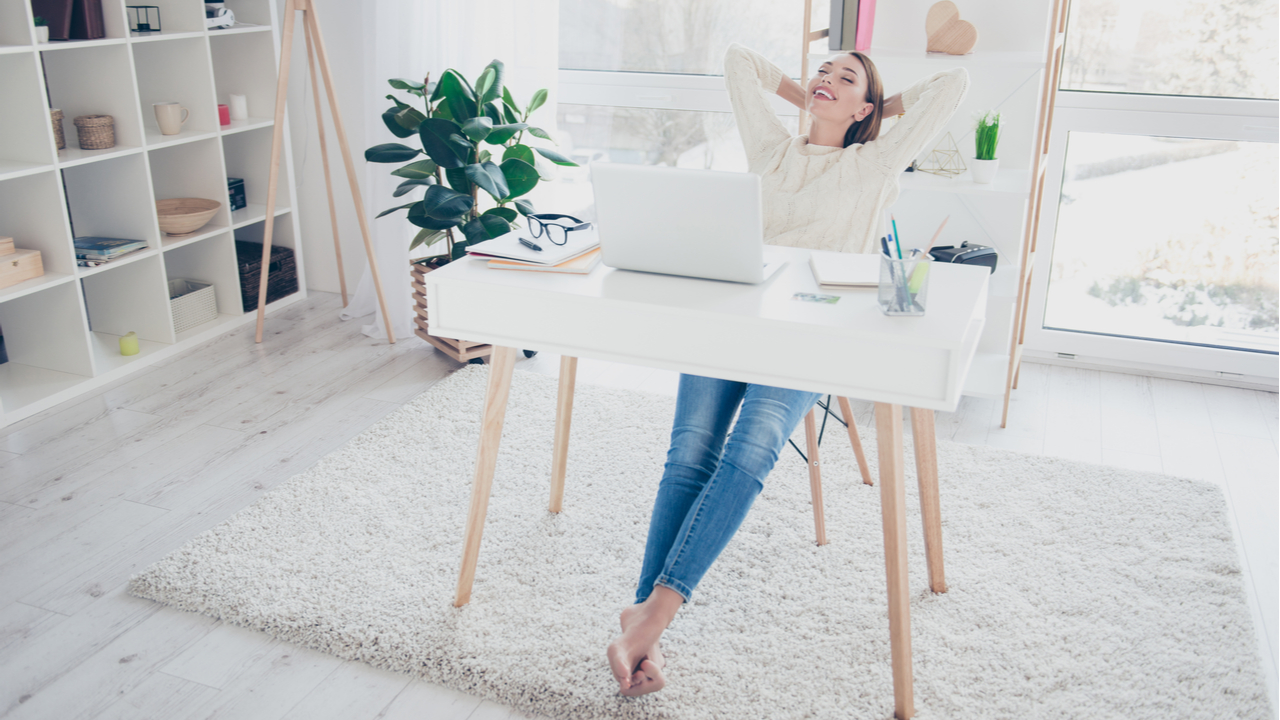Adapting Multifamily Design to Trends in Apartment Living

Trends in apartment living typically dictate multifamily design, and in 2021 this has held particularly true. The pandemic drastically altered the lifestyles of residents, now spending more time than ever in their homes. Space once reserved for common after-hours amenities is now being reimagined to accommodate 24/7 living.
Although this year’s outlook has brightened with the surge in vaccines, many designs are being penciled with coronavirus safety protocols in mind. The shift in planning is centering on a subtle balance between social distancing and engagement.
Inside, wide-open spaces are being broken up by creative partitioning and cozy conversation pits are spreading into semi-private sections that encourage socializing. Outside, green space is expanding to tantalize residents’ culinary preferences and physical and mental health without crowding.
HPA Design President Chelsea Dora-Shibley says multifamily design should reflect residents’ desire to feel safe when interacting with others in the apartment community, whether during business hours or afterward.
Seating areas separated by decorative partitions, personal workout spaces and glass-enclosed work areas in common areas offer separation without compromising the visibility essential to creating a sense of community.
“Even as the pandemic subsides, applied social distancing will still remain throughout our communities,” says Dora-Shibley. “It’s wonderful to have amenities like these sprinkled through your property where people can social distance.”
But adapting designs to the pandemic extend to spacing out gathering areas. Apartment design now and in the future should appeal to not just co-working and personal work spaces but how residents are spending idle hours.
Workplace and Social Media Spaces
Common areas are being transformed to adapt to residents who stay engaged with families and friends through social media. As 2020 wound down, the most requested amenity across the board was podcast and TikTok studios, Dora-Shibley says.
Last year, Americans spent 82 minutes per day on social media - up to seven minutes more than they did in 2019. Platforms like TikTok, Instagram and Facebook have evolved from entertainment to becoming essential to getting together with friends and family.
Hosting meaningful forums and creating video stories are stirring demand for dedicated spaces that offer privacy and, in some cases, equipment for presentations. Dora-Shibley says the spaces can be as simple as a round table and a microphone for interviews or creating seating framed by a green screen for virtual backgrounds.
“We feel this will be very strong in 2021,” she says. “Even with a very small space footprint, it can be utilized for multiple functions, including podcasts, Tik-Toks, Instagram moments, all the prevalent social platform activities. This is definitely becoming more and more desirable across the U.S.”
Kortney Balas, Vice President of Information Management at JVM Realty, says properties that have screening and theatre rooms were in greater demand last year as residents sought places to host Zoom meetings and other activities. Residents could reserve space through ActiveBuilding, a resident portal designed to build stronger communities.
“Virtual events were offered to keep residents feeling the sense of community when they were required to stay home,” she explains.
Creating Wellness Retreats
Dora-Shibley says another lasting impact from the pandemic is residents’ connection with nature. As stress related to working from home and dealing with isolation mounts, more attention is on biophilic design and the architectural concept of connecting with nature.
Wellness areas inside and outside can improve mental health and provide emotional grounding.
“You can also designate some of these places to be tech-free zones for people to disconnect from reality,” she says.
Designing to capture as much natural light as possible brightens rooms and can help alleviate the mental stress of being stuck inside. Studies show that sunlight can improve a person’s mood and help the body produce vitamin D, which reduces aches and pains.
Food and Pet Amenities in Multifamily Design
Social distancing has compromised the lunch hour for many, so offering food options that don’t involve leaving the property is a way to keep residents engaged. HPA Design Group is designing dedicated spaces for food trucks and farmer’s markets so a resident can dine out just a short walk from their apartment.
Open courtyards with access to food trucks – an already proven tasty amenity for multifamily communities – are ideal for gathering at a safe distance while giving teleworkers a break from the daily work grind.
“Courtyards offer that open-space park feel,” says Dora-Shibley. “They’re areas where you can congregate, have some tables outside. Dynamic usage is the ideal amenity function.”
Multifamily properties also continue to embrace pet-friendly communities, and the bond between residents and their furry friends has strengthened over the last year. Pet adoptions skyrocketed during the pandemic, so much that TIME proclaimed rescue animals its “2020 Pet of the Year.”
Pets have proven to be therapeutic and offer a fuzzy, friendly break for teleworkers without leaving their desks. Dora-Shibley says incorporating pet-friendly perks like dog washes, bark parks and agility parks can help attract new prospects and retain residents who work from home.
“Understanding and amenitizing for these new family members will offer monetization opportunities for our developers and will also entice members of this ever-growing pet owner demographic,” she says.
Dora-Shibley remarks that developers can take multifamily housing design a step farther and create personal programming that helps residents feel more connected. This involves identifying the property’s unique “story” and making residents feel as if the community is catering to them.
“Having spaces with local beer taps and wine tasting rooms, demo kitchens or flexible-maker spaces are small ways that we can identify and capture the resident personality,” she says. “This helps them feel as if these amenities are curated specifically for them.”
The ActiveBuilding Resident Portal and eCommerce platform helps properties monetize amenities and space with a powerful communication tool that builds stronger communities. For more visit RealPage ActiveBuilding.